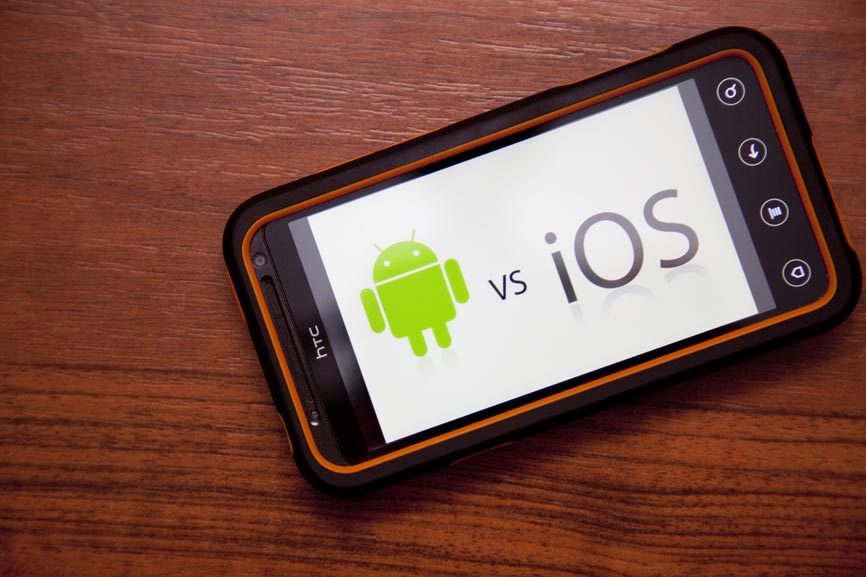Smart mobile devices like tablets and smartphones have revolutionized the business world ever since their introduction. Boosting productivity, helping entrepreneurs organize their agenda, monitoring the efficiency of the operations at the tap of a screen are just a few of the benefits. It goes without saying that the two main competitors on the market right now are Google’s Android and Apple’s iOS, with the Microsoft’s Windows 10 approaching fast from behind. The debate on which of these two archrivals offers better technology and functionality in general is far from over, but let’s discuss how they score against each other for conducting business.
Origins and apps overview
Released back in 2007, the iOS was activated over 400 million times before the end of 2012, and boasts over 900,000 applications in the Apple Store, encoded in 34 programming languages. Launched in 2008, Google’s Android was activated by approximately 900 million times before the second quarter of 2013, and boasts 700,000 available applications in the Google Play store, encoded in 32 programming languages.
Sales value and percentages
In the early 2013, Apple hit a bit of a rough patch, as their sales dropped by 3.5 percent, whereas during the same period Android sales went up by 5.8 percent. Even so, Apple recovered during the first quarter of 2013, and managed to sell over 47 million devices, which is roughly double compared to their sales in 2012’s final quarter. However, the number of Android smartphones sold places Google securely in the lead, with over 75% of the market worldwide and 90% of the market in China. The estimated number of activated smartphones operating on the Android OS is of 900 million.
Applications and their value
Statistics indicate that Apple product users are more inclined to purchase and install a higher number of applications compared to Android fans. It’s also worth noting that the number of available apps for iOS is higher than the one in the Google Play store, by roughly 200,000 (900,000 versus 700,000). However, research also shows that the growth rate of the Google Play store is superior to Apple’s. Nevertheless, the iOS devices win this round because the median score awarded to their applications is of 68.5 compared to Android’s 63.3 rating.
Mobile payment capabilities
The greatest advantage of Android over the iOS at this point is the NFC (Near Field Communication) chip. NFC tech enables a customer to pay for the purchases simply by waving the smartphones on the POS. Apple is promising to allow developers to utilize the NFC technology in the near future, but nobody’s holding their breath.
On the other hand, Apple benefits from the Passbook application that aggregates the entire set of credit and debit cards, travel tickets, reward cards, etc. into a comprehensive package and they can be displayed at the appropriate time. From this point of view, it’s really a tie.
Popularity contest in the business world
In spite of the fact that Android smartphones outnumber the iOS devices by 6 to 1, it turns out that in the business sector 62 percent of the market belongs to Apple. However, Android devices are becoming increasingly popular in Europe, Africa and the Middle East, particularly for use in non-profit organizations and in the education sector.
